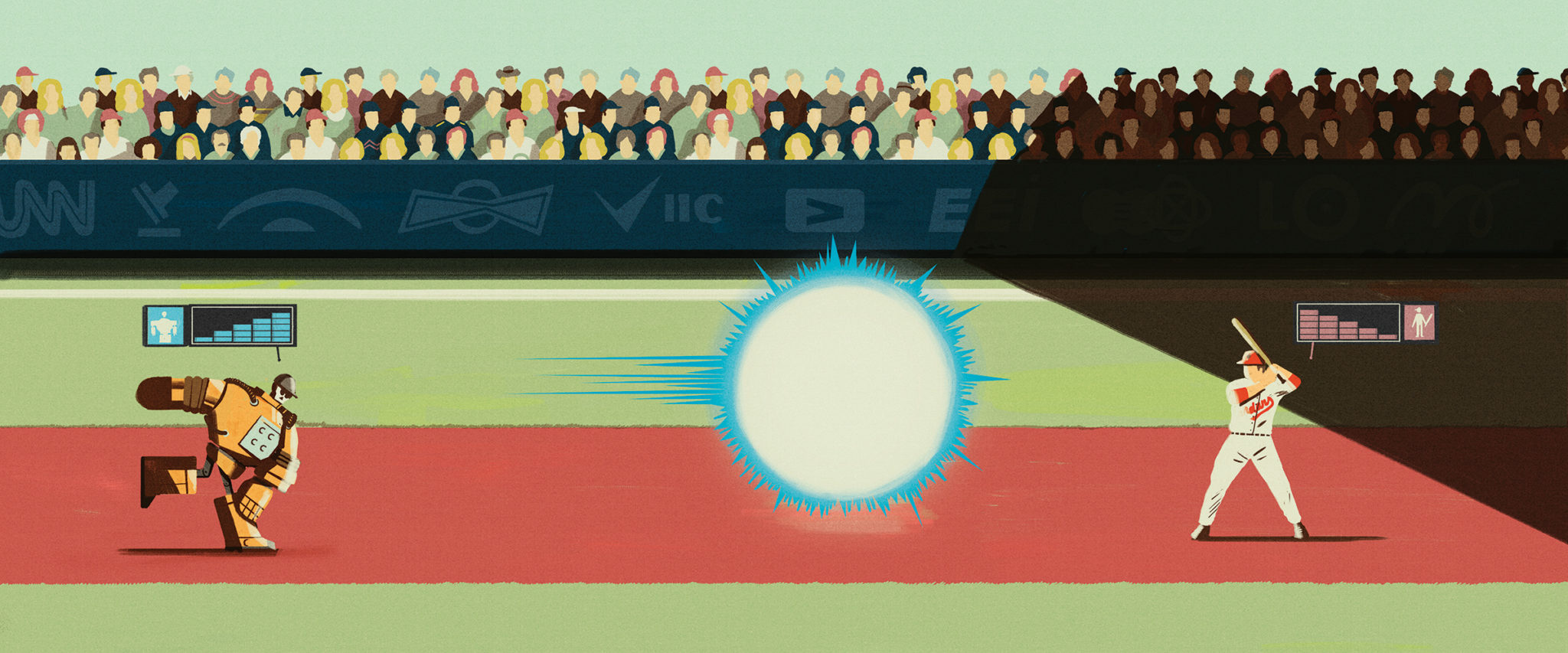“I’m firmly in Generation X,” says Dan Fiden ’97. “Video games were a part of my life probably earlier than some other people.” That was both uncommon for his generation, says Fiden, and totally uncool. But for the kids these days? “Every millennial grew up with video games as an important—or more important—part of their leisure-time activity as TV or music, and when you start to move toward the younger millennials, it’s absolutely dominant.” That cultural shift has fueled the rise of esports—professional, competitive video gaming—which Goldman Sachs estimates will be a $3 billion business watched by 300 million people by 2022.
A former game developer and investor, Fiden is not yet two years into his role as president of Cloud9, a company with 80 esports players under contract—a total of 16 teams playing in 12 different leagues—which generates around 10 million hours of online viewing a month (and, as of late fall, more than $70 million in financing). We talked to Fiden about how esports became a cultural and commercial force—and where it goes from here.
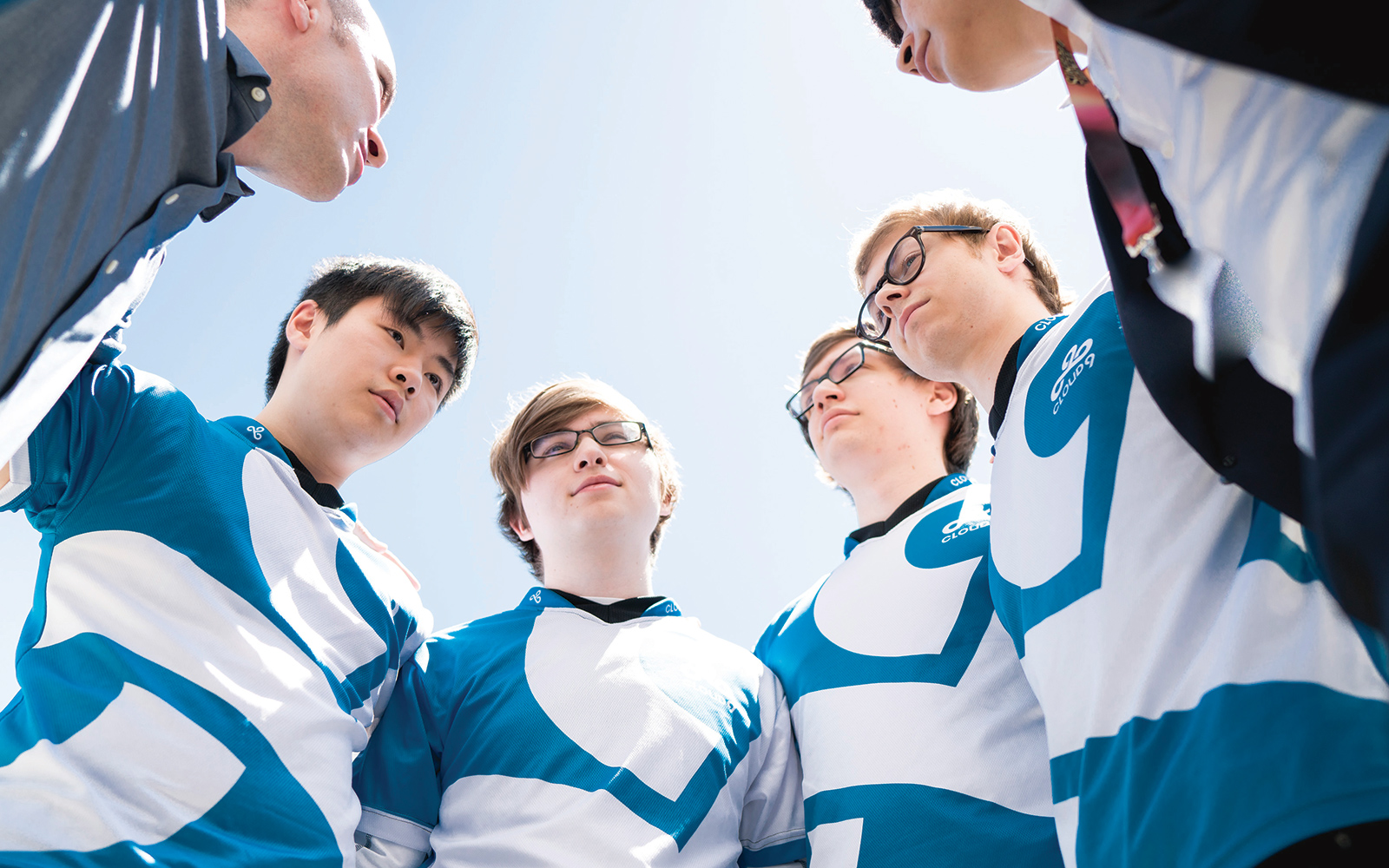
As an investor, you led some early funding of Cloud9, and then you joined the company. What opportunity did you see?
The amount of engagement and viewership that esports was generating—and continues to generate—was really staggering. The real scaling up of esports started with the growth of two things at once: One is the video game streaming platform, Twitch, and the other is a game called League of Legends. League of Legends is interesting for a couple of different reasons. One, it’s just a terrifically fun video game. Two, it’s the kind of game that has become increasingly popular and common in the video game industry, where you download the game for free, and then the game makers make money by selling digital goods inside of the game—different outfits for the characters you play and stuff like that. Twitch is a platform where you can go to the web page and watch a person play a video game live and interact with them through chat. League of Legends and Twitch started to grow up at the same time, and they were very complementary.
And that movement is a reflection of the fact that, for the past 35 years, video games have become an increasingly important part of pop culture and the worldwide media landscape. The video game industry is a $110 billion industry. It’s substantially larger than movies, TV, music, all of that. When you think about time spent and money spent, video games have already been—for quite a while—the most impactful and important pop art of our time.
We know how esports is different from traditional sports. Can you talk about some of the ways that esports is similar to traditional sports in terms of training and practice?
I can use the example of our League of Legends team. At about 9 a.m., their alarms go off, and they go to the gym—because all of our players know that exercise is important to be the best they can be in any occupation. When they get back from the gym, they meet with the sports psychologist and mindfulness coach and do mindfulness meditation for half an hour to 45 minutes. While they’re eating breakfast, they have a team meeting with the coaching staff and talk about what they’re going to work on that day. And then they’ll have their first scrim block, which is just a scrimmage against another professional team. That’ll usually start at like 11 a.m. and go for an hour to an hour and a half. Then they’ll review the video of the scrim with the coaching staff and talk about what went right, what went wrong, what they can improve. Then they’ll have some food, do another scrim block, have another break, do reviews, and then they’ll do a third scrim block, and then at about 6:00 or 6:30, they’re done for the day. At that point they’re free to do whatever they want, but most of them will—at some point in the evening—get on Twitch and play the game and stream and interact with their fans for a few hours.
We have physical therapists, and we’ve got a head of player health and wellness, who is a mindfulness-based performance coach. In a lot of ways, it’s very similar to any traditional professional athlete’s experience.
“The question you should be asking is, ‘When will we buy the New York Yankees—and change what they do?’”
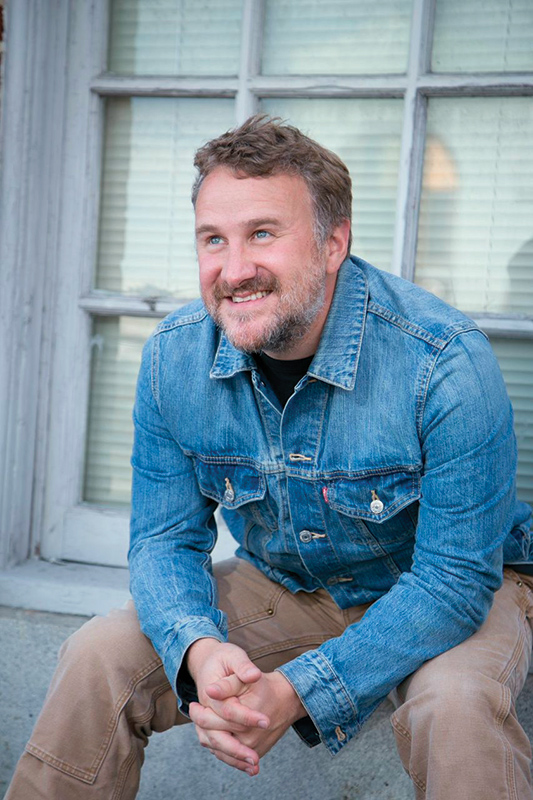
Another similarity to traditional sports that Cloud9 is pursuing is building “home” facilities for some of its teams. Why does an esports team need a place to play?
We’re in the process of building a facility in L.A., which is the company headquarters, and one in London. The one in London will be the home of our Overwatch League team, the London Spitfire—that’ll be their venue, their ballpark if you will, but it will also have training and office facilities, as well as a retail space.
There’s value in physical space. If you happen to be the kind of kid who wants to play video games, there isn’t a framework for you to play in anything resembling a youth league or a Little League. There’s no way to get to interact with a coach in person. There’s no analog of a ballpark where you can go and play your game and then hang out, buy nachos, and talk to your friends.
Not only is that a really fun and important experience for kids, but I think most people who put their kids into youth sports don’t do it because they think their kids are going to be professional athletes; they do it because there are valuable lessons that you learn about being a human. How do you learn how to screw something up and then have your coach try to help you get better? How do you win and win well and not be a jerk? This is all stuff that I think is really fundamental to why youth sports is an important part of kids growing up.
One of the reasons that we’re investing in these facilities is because we feel like the starting place for that is a place. In youth sports, you think about league infrastructure, equipment, referees, coaches. Really, what you need first is: Where do you practice? We all take it for granted because every school and every municipality has the tiny Little League diamonds that you can just go and use, but that doesn’t exist for esports. I think it is an important part of sports that esports is missing right now.
What about the argument that kids should be outside playing games—do you find yourself having this argument more often or less often?
All of our players understand health and wellness and exercise. We know that if you want to be mentally acute and be able to perform at the level that they perform, that the path to that is a well-rounded, healthy lifestyle. Period. There’s no way around that. I think the core of what you’re talking about is a generational thing. It’s the same thing as “rap music isn’t real music.” Before that it was, “Rock ’n’ roll music isn’t real music. Real music is Benny Goodman,” or whatever it was. I’m not interested in that. Time takes care of that. Gravity will solve that problem for me—I don’t need to solve it. The reality is that this war is over, and kids want to play Fortnite. Parents may say that they’re uncomfortable with it, but somehow or another, everyone is playing Fortnite, and all of the fathers that I know are playing it with their kids and trying to figure out a way to hire a coach for them.
The real question is how can you let them play Fortnite and build on what it is they already love, but in a way that lets them learn the lessons that are really important. That’s what we have to solve.
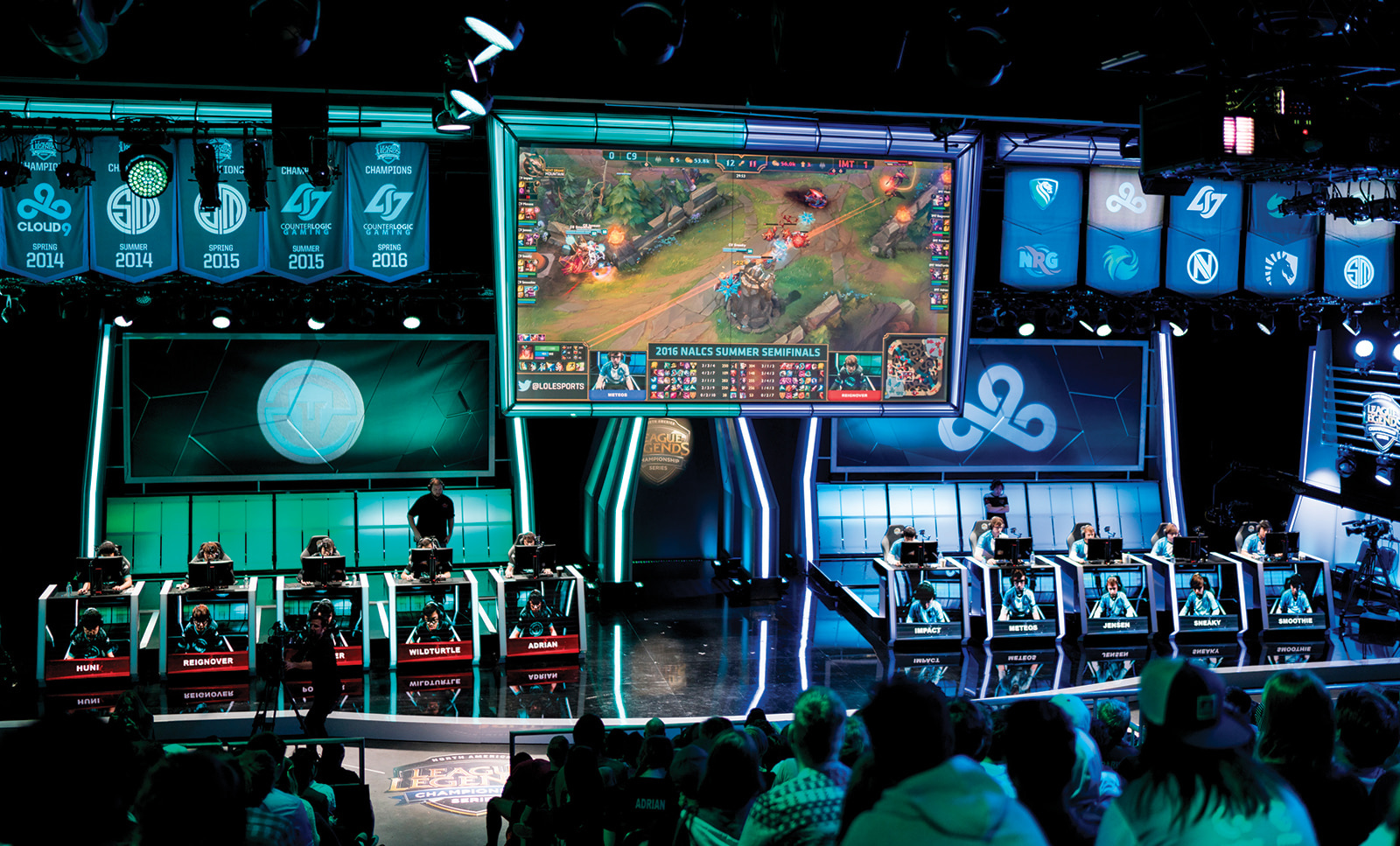
We’ve seen a number of mainstream sports owners—the owners of the New England Patriots, the owners of the New York Mets—buying esports teams or investing in the space. Athletes like Joe Montana and Hunter Pence have made investments in Cloud9. What’s behind that trend?
I’ve talked to a number of the sports-team owners in the past couple of years about this, and there is a nontrivial number of them who are like, “Gosh, I don’t know anything about esports, but what I know is that my 14-year-old kid loves Fortnite.” So there’s that.
But I also think that for traditional sports teams and sports-team owners, a lot of this comes down to a fundamental problem that exists in their businesses. The average age of a major league baseball fan right now is 54 years old. If your average customer is 54, in most businesses right now, that’s probably a little bit concerning. And when you really drill down into that, it’s actually a little bit more concerning because of a couple of things.
The Baby Boomer generation was a historically large generation. Gen X, mine, is one of the smallest generations as a percentage of the total population, and the millennials are another very large generation, historically, as a percentage of the total population. The rate at which the Baby Boomer generation is disappearing will accelerate over the next five to 10 years at a very rapid pace. Millennials are 35 percent of the total population right now, Boomers are 33 percent, and Gen Xers are 14 percent. Now just play the tape forward; advance the timeline. It becomes really problematic, really quickly. If I own the Yankees, I’m panicked. My business is basically being kept afloat by Baby Boomers and—God bless them—they’re not going to be around buying tickets for very much longer.
Then you get into lots of really interesting questions about why this is happening. One is that video games are really relevant right now and probably will be forever. Another thing could be that millennials and younger generations have grown up with different media platforms, and so the content and types of engagement that they demand are fundamentally different, and traditional sports haven’t really changed the way that they produce content or engage their fans in a very long time.
Our pro players interact with their fans in a fundamentally different way. It’s very different than what you can get from, say, LeBron James. Imagine this: Every day after practice, LeBron goes home, shoots around in his driveway with a GoPro strapped to his head, facing his face, and interacts in real-time with fans. Can you imagine how many people would watch that? And if he said, “If you like what I’m doing, donate $5,” how much money do you think you’d get from that? Then when somebody donates $100, he’d say, “Oh, hey Joey. Thanks for the $100.” That’s what happens on Twitch. It isn’t really that radical a leap to think maybe the problem isn’t that basketball as a game just sucks. Maybe the problem is that these guys just aren’t making content around basketball that is relevant to people who’ve grown up in a modern media and social media landscape.
Cloud9 announced a $50 million funding round in October. What are the questions people are asking you about how the sector can grow?
The question I’m really interested in around esports and around Cloud9 is, when do traditional sports start to look more like esports? More importantly, what company is going to make that happen? When investors and people that we work with ask if I’m going to sell Cloud9 to the New York Yankees someday, I’m like, “Well, the question you should be asking is, ‘When will we buy the New York Yankees—and change what they do?”
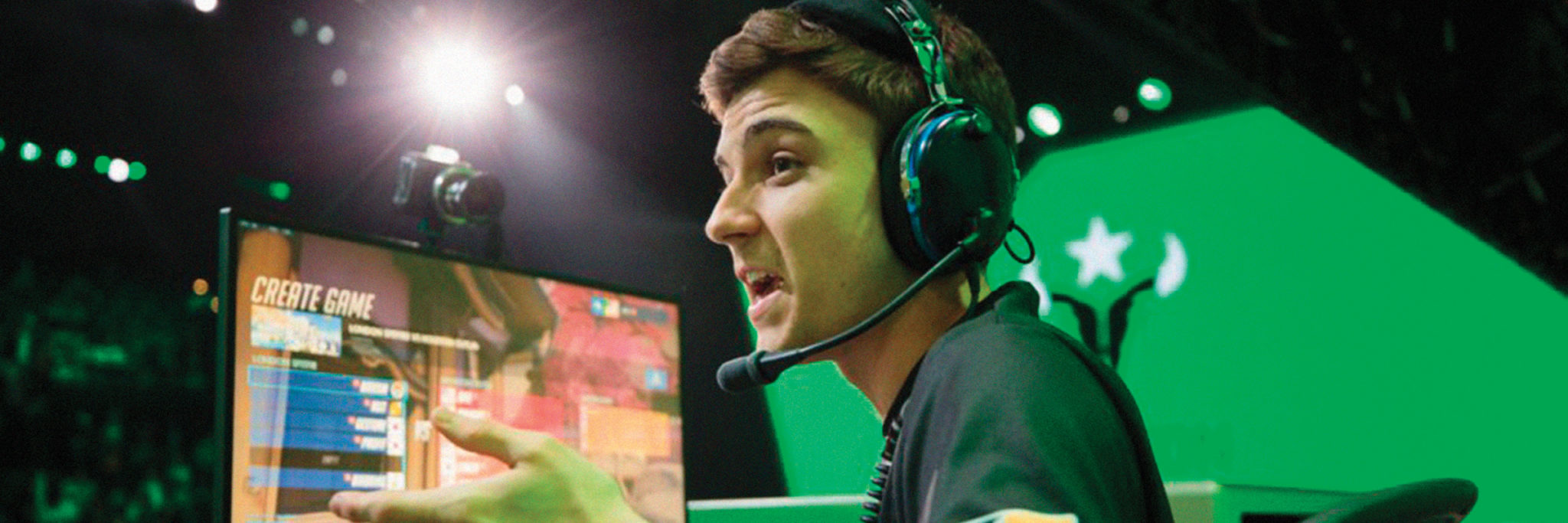
The Outlaw
Jake Lyon ’18 had always been good at video games, but when a new online game called Overwatch was released the summer after his sophomore year at Denison, he quickly catapulted to become one of the best players in the world.
And while he’d never dreamed of becoming a professional video game player—“that sounded almost as ridiculous and unattainable as saying, ‘I want to be a pop star,’” says Lyon—he realized he actually had a chance. “I had a keen sense that I had a real opportunity to make it as a professional player.”
And make it, he has: His junior year, Lyon spent his entire waking life focused on his Denison double-major of philosophy and economics and Overwatch. He formed a semiprofessional team with other upper-echelon players all over the country, which performed well enough to get sponsored and net monthly paychecks.
A stellar appearance in the Overwatch World Cup as a member of Team USA earned Lyon additional attention, and soon he was recruited to join the first roster of the Houston Outlaws during the inaugural season of the Overwatch League—a multimillion-dollar professional esports league that draws millions of viewers from around the globe. He’s on the verge of signing a three-year contract extension with the Outlaws, which gives the 22-year-old a great deal of security in the uber-competitive industry. “It’s an obscenely good position to be in just out of college,” says Lyon.
His parents, who tolerated his video game playing in high school because he kept his grades up, are pleasantly surprised that he earns a living through the games they once thought he was wasting his life playing. “When they came to see me play in the World Cup, in a sold-out arena with another 380,000 viewers watching remotely, they were like, ‘Okay, maybe there’s something to this.’”
What’s on the horizon after professional gaming? Lyon would like to keep working in the league in casting, similar to the announcers who call games for the other professional sports leagues. Or he’d like to get involved in coaching or team management. “It’s a young industry that’s developing very quickly. It’s exciting.”
—Alice Duncanson

